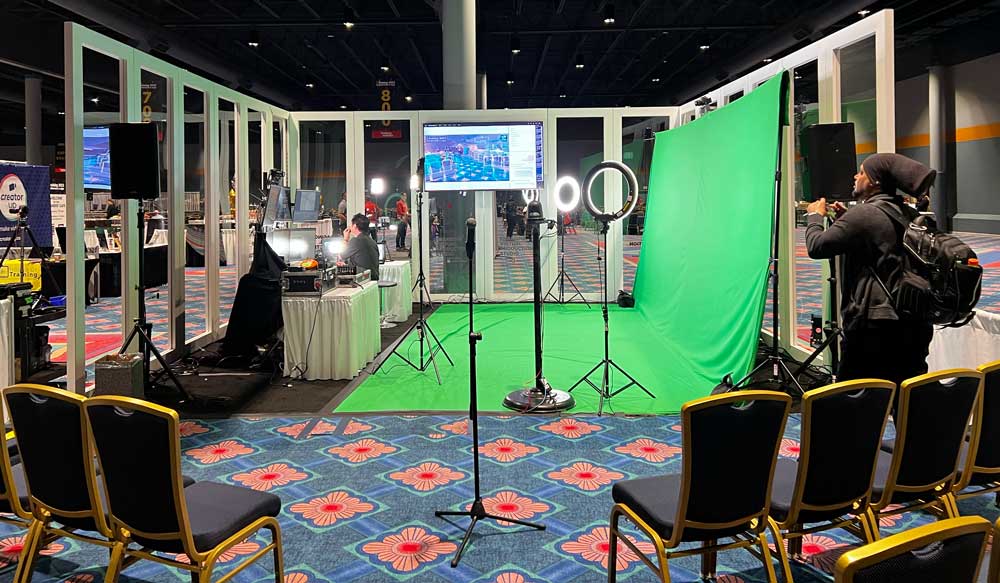Earlier this month, I had the pleasure of joining John Chen – author of Engaging Virtual Meetings – in his Virtual Production Studio on the expo floor of the 46th annual Training Conference. To say his setup is impressive is vastly understating it.

The Studio featured 6 large monitors for the host along with an additional 80-inch monitor on the wall that everyoene could see. It included an array of 5 cameras (one controlled remotely with a joystick on the desk that could pan, zoom, and tilt), an 8-channel audio mixing board, high-quality microphones, an Elgato Stream Deck, an iPad (for controlling music), and a high-powered PC controlling everything. The back wall and floor were completely covered with a green screen and there were several LED lights on light stands to ensure even lighting of the green screen background and the presenters who were there in-person. There were also a number of chairs for an in-person audience. Attendees to the conference could drop by and see how the Studio was being used to deliver a virtual event.

The audio and video feeds were all fed into Adobe Connect and over the two days at the expo, John – along with a variety of industry-leading speakers – delivered 12 hours of content to a hybrid audience. I learned a lot from John and the speakers during the conference – here are a few takeaways.
Start small. Every improvement makes a positive impact.
One could easily get overwhelmed looking at the impressive setup that John was using at the conference. It’s easy to say “I can’t do all that”. Here’s the thing – you don’t need to. You can start with small, manageable improvements. What can you do to make yourself look and sound better in a virtual environment? That might mean a new webcam – or it could mean choosing a location with better lighting and ensuring your camera is positioned at the correct distance and angle from you. It doesn’t mean you should go out and purchase 5 DSLR cameras and a video mixing board. The incredible Studio setup shouldn’t be seen as something that is required – but rather as something that might inspire you to up your game.
Hybrid is difficult. Prioritize your virtual audience.
Something that struck me when I first saw the design for the Studio was that the host was not facing the in-person audience. This was setup on purpose – the goal was for the in-person audience to see how a virtual session is produced – but it also served as a great reminder to prioritize your virtual audience during hybrid events.
It felt unnatural to look into the cameras when an in-person audience was also in the room – but they could also see us on the 80-inch screen. Delivering hybrid sessions well takes practice; it’s easy to forget about the audience attending virtually. Try to prioritize the virtual audience when it comes to questions, as well as eye-contact.
Give your audience time to think.
Asking questions is a great way to drive engagement with your audience. We often fail to give participants time to consider their answers though. Remember that, as a host or instructor, you’re familiar with the question. Your participants are not. Give them sufficient time to consider the question and their responses.
Video quality is important. Audio quality is critical.
A lot of the devices and technology in the Studio were there to help everyone look their best. Using the wall of green screen and multiple cameras meant not being restricted to the typical ‘head & shoulders’ framing common with most virtual events. Having good visuals helps create a better virtual session. Having good audio quality though is far more important. Audio quality makes a much bigger impact on your session – especially if it’s bad. Focus on sounding great before you worry about looking great on camera.
